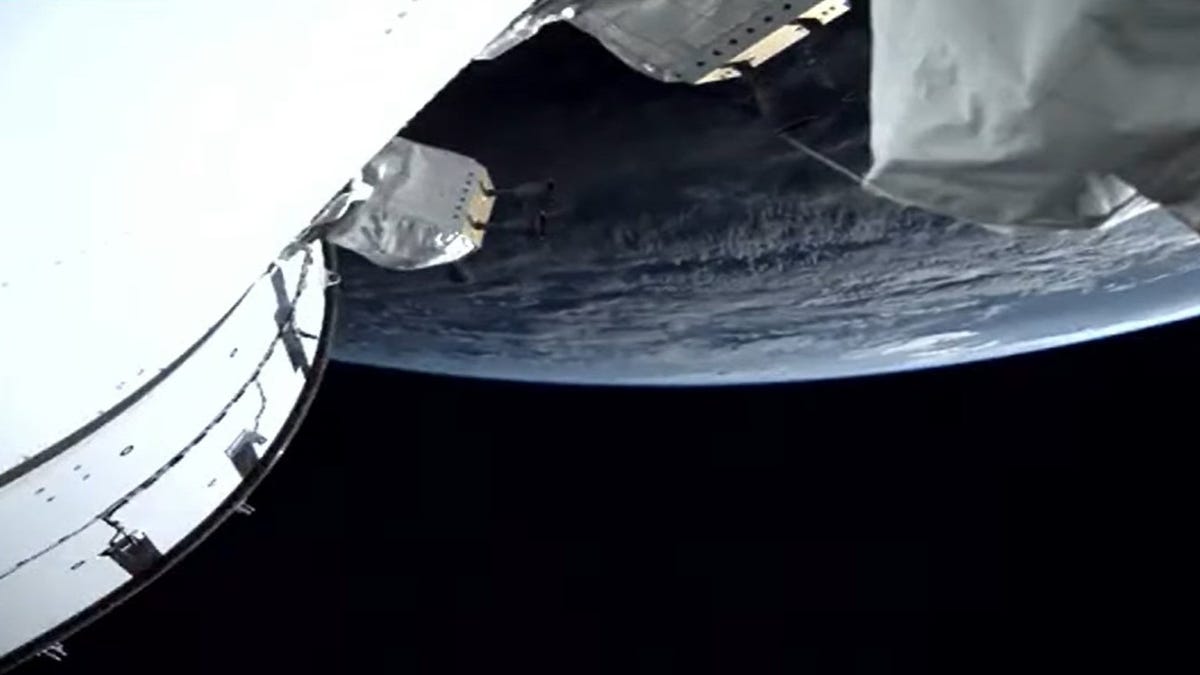See NASA Orion Spacecraft's First Exhilarating Views of Earth
Artemis I took off in a blaze of glory and Orion finally got to see its home planet from space.
In a triumphant display of raw rocket power, NASA finally launched its long-delayed Artemis I moon mission. When the fiery bluster was over and the Orion capsule made it safely to space, the spacecraft captured some fresh looks at our beautiful home planet.
While Artemis I, an uncrewed trip around the moon, is NASA's baby, it also has international partners invested in the trip. The European Space Agency has made contributions, and its logo is also emblazoned on the Orion system. ESA's Human Spaceflight group shared one of the first Earth views from Orion's cameras after launch.
First views of Earth, soon the Moon!
— Human Spaceflight (@esaspaceflight) November 16, 2022
Seen from cameras at the end of the European Service Module's solar array wings. #ForwardToTheMoon pic.twitter.com/LiUkggeOnN
The image shows part of Orion in bright white, with the blue curve of Earth beyond. It was taken by a camera mounted on the end of one of the solar array wings that's part of the European Service Module. The module provides power, water and oxygen to the Orion capsule that will one day carry humans on board.
Orion is kitted out with 16 cameras to document its historic journey around the the moon and back. The four solar array wings each have at their tip a commercial camera that's been adapted for spaceflight. Other cameras are mounted both inside and outside the spacecraft.
NASA shared an impressive short video from Orion showing Earth as an ethereal ball falling away from the spacecraft. It brings home the reality of the long-awaited launch and highlights how it's been smooth sailing for the mission so far.
As @NASA_Orion begins the #Artemis I mission to the Moon, the spacecraft captured these stunning views of our home planet. pic.twitter.com/Pzk3PDt7sd
— NASA Artemis (@NASAArtemis) November 16, 2022
NASA followed up that video with another one showing Earth looking like a glowing blue and white pebble against the darkness of space. Orion was 57,000 miles (92,000 kilometers) away from home at this point in its trip.
New views of planet Earth from @NASA_Orion as #Artemis I journeys to the Moon. Orion is 9.5 hours into a 25.5-day test flight. pic.twitter.com/CBaA4ZOK4X
— NASA (@NASA) November 16, 2022
Artemis I is just getting started. Orion is heading for the moon with an expected return to Earth on Dec. 11. NASA is testing out the capabilities and safety of the massive Space Launch System rocket and the Orion spacecraft to show they're both safe to carry astronauts for Artemis II. That means the next time Orion launches, it could have humans on board taking Earth pictures.


